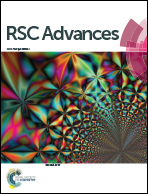Interface modification for efficiency enhancement in silicon nanohole hybrid solar cells
Abstract
In this paper, the interface between Si nanoholes (SiNHs) and poly(3,4-ethylenedioxythiophene):poly(styrenesulfonate) (PEDOT:PSS) is investigated and improved to achieve high-efficiency SiNH/PEDOT:PSS hybrid solar cells. The high-density SiNHs are fabricated using short-time Ag deposition before metal-assisted chemical etching (MacEtch) method. Also, a polymer coverage method is explored to overcome the difficulty of PEDOT:PSS infiltration into SiNHs. PEDOT:PSS is mixed with co-solvent dimethylsulfoxide (DMSO) to have better polymer infiltrate into SiNHs via two-step coating process. This technique significantly improves the interface between SiNHs and PEDOT:PSS; the greatly reduced contact angle from 90° to 16° at the interface of Si and PEDOT:PSS has established this fact. In addition, the minority carrier lifetime is dramatically increased from 31.52 to 317.20 μs. The property improvement enables the SiNH/PEDOT:PSS hybrid solar cell with high Jsc of 36.80 mA cm−2, Voc of 0.524 V, FF of 66.50%, and thus PCE of 12.82%. Also, the SiNH structures have an excellent light-trapping effect, which contributes to very low average total reflectance of 3%, due to internal multiple reflections caused by subwavelength features. At an angle of incidence up to 60°, the specular reflectance maintains at as low as 1%; even at a large angle of 70°, the reflectance is still below 10%. This work provides a feasible solution process to fabricate SiNH structure and to improve organic/Si hybrid solar cells in energy and cost-effective manner.


 Please wait while we load your content...
Please wait while we load your content...